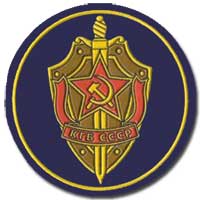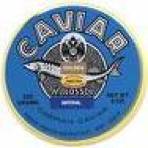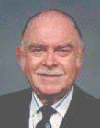Intelligence agencies from both East and West tried their best to recruit from the other side. Sometimes they were successful, most often they were not. Here is one vignette that must bring a smile to faces on both sides of the Cold War.
by J. Edgar Williams
 From mid-1963 through late 1965, I was stationed at the U.S. Embassy at Montevideo, Uruguay as Deputy Chief of the Economic-Commercial Section. Aside from the usual tasks associated with that position, my main substantive job was as U.S. Observer at the Latin American Free Trade Association (LAFTA), whose headquarters was in Montevideo. It was only about 3 years old when I started. It was modeled partly on the European Economic Community. Their idea was to increase trade — and therefore production and jobs — by lowering tariffs and non-tariff barriers to trade among a number of the larger, and a few of the smaller, Latin American countries. Montevideo was chosen as the site for the headquarters because it is in the smallest country, between two of the Big Boys — Argentina and Brazil. (Think “Belgium”.) I came to know LAFTA and its delegates quite well and my reports were read at high levels in Washington.
From mid-1963 through late 1965, I was stationed at the U.S. Embassy at Montevideo, Uruguay as Deputy Chief of the Economic-Commercial Section. Aside from the usual tasks associated with that position, my main substantive job was as U.S. Observer at the Latin American Free Trade Association (LAFTA), whose headquarters was in Montevideo. It was only about 3 years old when I started. It was modeled partly on the European Economic Community. Their idea was to increase trade — and therefore production and jobs — by lowering tariffs and non-tariff barriers to trade among a number of the larger, and a few of the smaller, Latin American countries. Montevideo was chosen as the site for the headquarters because it is in the smallest country, between two of the Big Boys — Argentina and Brazil. (Think “Belgium”.) I came to know LAFTA and its delegates quite well and my reports were read at high levels in Washington.
There was an association of diplomats in Montevideo that met for lunch every month. I attended regularly and was frequently asked about LAFTA’s progress by my colleagues. At one of these lunches, a Soviet diplomat named Vladimir took a seat beside me. He said it was well known that I was the expert on LAFTA and that nobody there would talk to him. He asked if, as a professional courtesy, I could give him copies of some of my unclassified reports on LAFTA, because Moscow was pressuring him for information and he had no other sources. I told him I would get back to him. As soon as I returned to the Embassy, I reported this to my boss and to the CIA station chief. They told me to be friendly (though not overly so) with Vladimir and to give him some unclassified reports. Vladimir was known to be a KGB man, and was one of the few Soviet diplomats allowed to live outside their compound. I called Vladimir, and he invited me to his house to have dinner with him and his wife. I gave him the reports, and we had a great dinner, preceded by real Caspian caviar and top-class vodka. Some days later, he invited me over for vodka and caviar, and told me that his boss had told him to get some more analytical material on LAFTA. He said he knew about our document classification system, and that he would consider it a great favor if I could just give him some reports at the level of Limited Official Use, which “as everyone knows”, is not really “classified” like “Confidential”, “Secret”, “Top Secret”, etc. My boss and the station chief told me to go ahead and give him some of these documents, after making sure they contained nothing that could be used against us or LAFTA. They wanted to see how far the KGB would go in what was an obvious attempt to get me in deep enough so that they could persuade or blackmail me into becoming an agent for the KGB.
 So, for several more weeks, I continued to have vodka and caviar with Vladimir and his wife, while giving him more and more interesting material, as approved by my higher-ups. He began asking about my career and my degree of satisfaction with it, my salary, etc. He made it all sound very innocent. However, something was going on in my life. I had asked a young woman to marry me. She was born on Canada but raised in Uruguay. At that time, if a Foreign Service Officer married a non-American woman, the couple was immediately transferred back to Washington to “Americanize” her. So she and I were married and I got orders to return immediately to Washington. I had a final meeting with Vladimir, who expressed great disappointment that I was leaving, but he said he hoped we would meet again at some other post. I believe he thought I was well on my way to being recruited. I never saw him again. Just as well. But never again have I had such fine caviar and vodka.
So, for several more weeks, I continued to have vodka and caviar with Vladimir and his wife, while giving him more and more interesting material, as approved by my higher-ups. He began asking about my career and my degree of satisfaction with it, my salary, etc. He made it all sound very innocent. However, something was going on in my life. I had asked a young woman to marry me. She was born on Canada but raised in Uruguay. At that time, if a Foreign Service Officer married a non-American woman, the couple was immediately transferred back to Washington to “Americanize” her. So she and I were married and I got orders to return immediately to Washington. I had a final meeting with Vladimir, who expressed great disappointment that I was leaving, but he said he hoped we would meet again at some other post. I believe he thought I was well on my way to being recruited. I never saw him again. Just as well. But never again have I had such fine caviar and vodka.![]()

J. Edgar Williams, Secretary of American Diplomacy Publishers and a member of this journal’s editorial advisory board, served for twenty-seven years in the U. S. Foreign Service.
